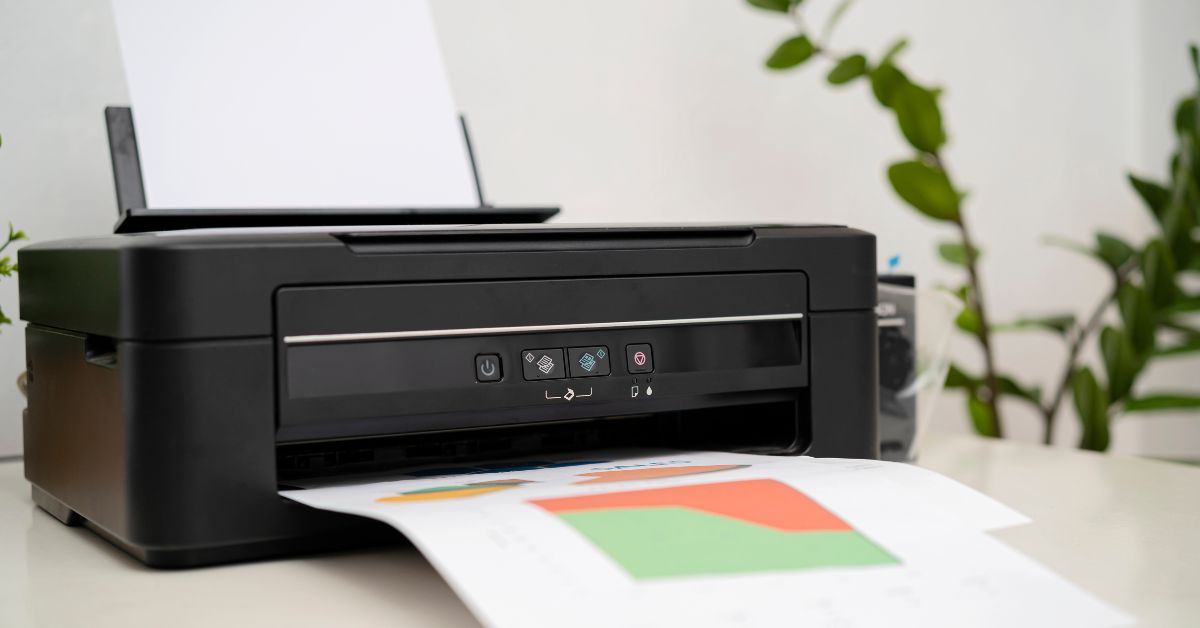Types of Printers: What Each Different Type is Best For

In today's digital age, printers remain an essential tool for both personal and professional use. From printing photographs to business reports, the right printer can make all the difference.
Here's a comprehensive guide to the various types of printers available in the market.
Different Types of Printers and What They’re Best For
1. Inkjet Printers
Inkjet printers operate by propelling variably-sized droplets of liquid ink onto inkjet paper. They are versatile and can handle a variety of printing tasks, from simple text documents to detailed color photographs. See our selection of photo paper
Best Used For
- Home printing tasks
- Color documents
- High-quality photo printing
- Fine art printing
- Occasional printing needs
2. Laser Printers
Laser printers utilize a laser beam to produce an image on a drum. The image is then transferred to paper via toner. These printers are known for their speed, precision, and cost-effective operation, especially for high-volume tasks.
Best Used For
- Office settings
- High-volume printing
- Text-heavy documents
- Professional presentations
3. Dot Matrix Printers
Dot matrix printers function by striking pins against an ink ribbon, creating an image on the paper. They are robust, reliable, and can produce carbon copies, making them suitable for specific tasks.
Best Used For
- Invoice printing
- Continuous printing tasks
- Multi-part forms
4. Thermal Printers
Using heat-sensitive paper, thermal printers produce images by applying heat. They are efficient, quiet, and are commonly found in retail settings.
Best Used For
- Receipt printing
- Barcode labels
- Point-of-sale systems
5. Dye-Sublimation Printers
Dye-sublimation printers stand out in the world of printing for their unique method of producing images. Instead of using liquid ink or toner, they employ a special type of heat-sensitive dye. This dye turns into gas when heated and then solidifies upon cooling, bonding with the printing medium.
The result is a smooth, continuous-tone print without the dot patterns typically seen in inkjet or laser prints. The prints are also less vulnerable to fading and water damage. Dye-sublimation is particularly popular for printing on non-paper mediums, such as fabric or ceramic.
Best Used For
- Photo booths and event photography
- Printing on mugs, shirts, and other merchandise
- Fabric banners and flags
- ID cards and badges
6. Multifunction Printers (MFP)
MFPs are the Swiss Army knives of the printer world. They combine printing, scanning, copying, and sometimes faxing into a single device, making them ideal for both home and office settings where space and cost savings are essential.
Best Used For
- Home offices
- Small to medium-sized businesses
- Settings requiring multiple functionalities
7. 3D Printers
A groundbreaking innovation, 3D printers craft three-dimensional objects by layering material based on a digital design. They have applications ranging from prototyping to medical equipment creation.
Best Used For
- Prototyping and product design
- Educational purposes
- Customized manufacturing
- Medical and dental applications
Printer FAQs
Which printer is best for high-quality photos?
Photo printers are specifically designed for this purpose, offering high resolution and color accuracy.
Are laser printers better than inkjet printers?
It depends on the use case. Laser printers are faster and more cost-effective for high-volume printing, while inkjet printers are versatile and can produce high-quality photos. You can see our laser vs inkjet printer comparison sheet.
How do 3D printers work?
3D printers create objects by layering material, often plastic or resin, based on a digital design.
What's the difference between a printer and a multifunction printer?
While a standard printer only prints, a multifunction printer combines the functionalities of a printer, scanner, copier, and sometimes a fax machine.
Original Publication Date: January 02, 2024
Article Last updated: April 22, 2024
Related Posts and Information
Comments are closed.
Categories
About Photographers
Announcements
Back to Basics
Books and Videos
Cards and Calendars
Commentary
Contests
Displaying Images
Editing for Print
Events
Favorite Photo Locations
Featured Software
Free Stuff
Handy Hardware
How-To-Do-It
Imaging
Inks and Papers
Marketing Images
Monitors
Odds and Ends
Photo Gear and Services
Photo History
Photography
Printer Reviews
Printing
Printing Project Ideas
Red River Paper
Red River Paper Pro
RRP Newsletters
RRP Products
Scanners and Scanning
Success on Paper
Techniques
Techniques
Tips and Tricks
Webinars
Words from the Web
Workshops and Exhibits
all
Archives
September, 2024
August, 2024
July, 2024
June, 2024
May, 2024
April, 2024
March, 2024
February, 2024
January, 2024
more archive dates
archive article list




